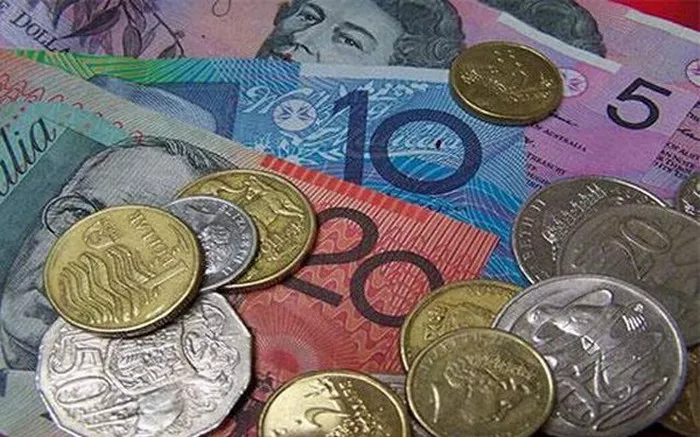In the global economy, currency stability plays a crucial role in determining a country’s economic health and attractiveness to investors. For Australia, a nation with a well-developed economy and significant international trade ties, the stability of its currency, the Australian dollar (AUD), is of paramount importance. This article delves into an examination of the stability of the Australian currency, exploring various factors that influence its stability and assessing its performance in recent times.
Understanding Currency Stability
Currency stability refers to the ability of a country’s currency to maintain its value relative to other currencies over time. It is a reflection of the confidence that investors and market participants have in the economic fundamentals and policies of a nation. A stable currency fosters economic certainty, encourages trade and investment, and helps maintain purchasing power for consumers.
Economic Fundamentals
The stability of a currency is closely linked to the underlying economic fundamentals of a country. Factors such as inflation rate, interest rates, economic growth, fiscal and monetary policies, and external trade balance all influence currency stability.
External Factors
In addition to domestic economic factors, external influences such as global economic conditions, geopolitical events, and market sentiment can impact the stability of a currency. Exchange rate fluctuations driven by external factors can have significant implications for a country’s economy, particularly for export-oriented nations like Australia.
Economic Fundamentals of Australia
Inflation Rate
The Reserve Bank of Australia (RBA), Australia’s central bank, maintains an inflation target range of 2-3%. Low and stable inflation is conducive to currency stability as it preserves the purchasing power of the currency. Over the years, Australia has generally succeeded in keeping inflation within its target range, contributing to the stability of the Australian dollar.
Interest Rates
Interest rates set by the RBA play a crucial role in influencing currency stability. Higher interest rates relative to other countries can attract foreign investment, increasing demand for the Australian dollar and supporting its value. Conversely, lower interest rates may lead to a depreciation of the currency. The RBA’s monetary policy decisions are carefully calibrated to balance economic objectives while maintaining currency stability.
Economic Growth
Australia has experienced robust economic growth over the years, driven by factors such as resource exports, a strong services sector, and a growing population. Positive economic growth signals confidence in the economy, attracting investment and bolstering the Australian dollar.
Fiscal and Monetary Policies
The Australian government’s fiscal policies, including taxation and public spending measures, influence economic activity and, consequently, currency stability. Similarly, the RBA’s monetary policies, such as adjustments to the official cash rate and quantitative easing measures, impact interest rates and the broader economy, affecting currency stability.
External Factors Affecting the Australian Dollar
Global Economic Conditions
As a highly trade-dependent economy, Australia is susceptible to global economic trends. Economic downturns in major trading partners can reduce demand for Australian exports, affecting the country’s trade balance and currency stability. Conversely, strong global growth can benefit Australia through increased demand for its exports, supporting the Australian dollar.
Commodity Prices
Australia is a significant exporter of commodities such as iron ore, coal, and natural gas. Fluctuations in commodity prices can have a pronounced impact on the Australian dollar, given the importance of commodity exports to the country’s economy. High commodity prices generally support the Australian dollar, while declines can exert downward pressure on the currency.
Geopolitical Events
Geopolitical tensions and events in key regions can affect investor sentiment and currency markets. Uncertainty stemming from geopolitical developments may lead to increased volatility in exchange rates, potentially impacting the stability of the Australian dollar.
Market Sentiment
Investor perception and market sentiment play a crucial role in currency movements. Positive sentiment towards Australia’s economic prospects, supported by factors such as strong growth, sound economic policies, and political stability, can bolster confidence in the Australian dollar. Conversely, negative sentiment or market uncertainty may lead to currency depreciation.
Performance of the Australian Dollar
In recent years, the Australian dollar has exhibited a degree of stability relative to other major currencies. Despite occasional fluctuations driven by domestic and external factors, the AUD has generally maintained its value within a reasonable range.
Recent Trends
Amidst the global economic challenges posed by the COVID-19 pandemic, the Australian dollar experienced volatility, reflecting uncertainties surrounding the economic outlook and policy responses. However, Australia’s effective containment of the virus, coupled with fiscal stimulus measures and accommodative monetary policy, helped support economic recovery and stabilize the currency.
Trade Dynamics
Australia’s trade balance, influenced by commodity prices, demand from key trading partners, and exchange rates, has a significant bearing on the performance of the Australian dollar. While fluctuations in trade dynamics can impact short-term currency movements, Australia’s diversified export base and strong trade relationships provide a degree of resilience to the currency.
Policy Response
The proactive stance of the RBA and Australian government in addressing economic challenges has been instrumental in maintaining confidence in the Australian dollar. Timely policy interventions, including interest rate cuts, fiscal stimulus packages, and targeted support measures, have helped mitigate downside risks and support economic stability.
Outlook
Looking ahead, the stability of the Australian dollar will depend on a range of factors, including the trajectory of global economic recovery, developments in commodity markets, domestic inflationary pressures, and the effectiveness of policy responses. Continued vigilance and prudent policy management will be essential to sustain currency stability and support Australia’s economic resilience.
See Also Old Australian Banknotes: Who Buys and Why
Conclusion
In conclusion, the stability of the Australian currency is underpinned by a combination of robust economic fundamentals, prudent policy frameworks, and external factors. While fluctuations in exchange rates are inevitable, Australia’s diversified economy, sound fiscal and monetary policies, and proactive policy responses contribute to the overall stability of the Australian dollar. Continued adherence to these principles, coupled with a focus on fostering economic resilience, will be vital in ensuring the stability and strength of the Australian currency in the years to come.


